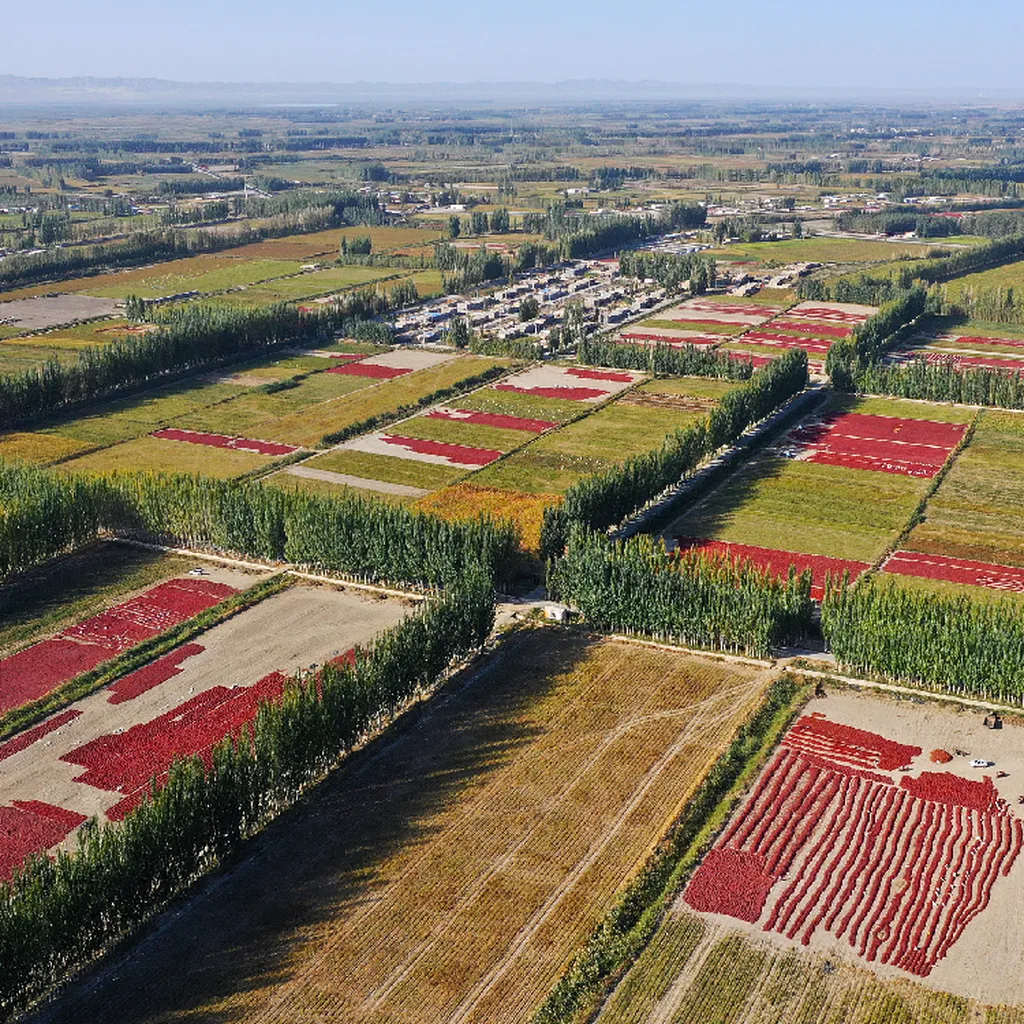In the sun-drenched fields of Xinjiang, a groundbreaking study is set to revolutionize the way farmers manage one of the region’s most valuable crops: the red jujube. Jingming Wu, a researcher from the College of Information Engineering at Tarim University and the Key Laboratory of Tarim Oasis Agriculture, has pioneered a novel approach to estimating nitrogen content in red jujube canopies, a critical factor for optimizing crop yield and quality. Published in the journal *Smart Agricultural Technology* (translated from Chinese as 智能农业技术), this research promises to bring precision agriculture to new heights, with significant implications for the agricultural sector.
Nitrogen is a vital macronutrient that plays a pivotal role in plant growth, photosynthetic efficiency, and fruit quality. Accurate estimation of canopy nitrogen content is essential for optimizing fertilization strategies, ultimately improving both yield and product quality. Wu’s study integrates multi-source data—including Sentinel-2 multispectral satellite imagery, ground-based hyperspectral reflectance data, and standardized leaf image data—to create a robust nitrogen inversion method. This approach not only enhances the accuracy of nitrogen content estimation but also provides a scientific foundation for precision agriculture in Aral City, Xinjiang.
“By combining different types of data, we can capture a more comprehensive picture of the canopy’s nitrogen status,” Wu explains. “This multi-source data fusion approach allows us to overcome the limitations of using a single data type, leading to more accurate and reliable results.”
The study employed a variety of machine learning models, including backpropagation (BP) neural networks, random forest (RF), and ridge regression, as well as ensemble combinations of these algorithms. The results were impressive: the optimal model, which combined BP, RF, and ridge regression, achieved an R² of 0.88044, with a mean absolute error (MAE) of 2.3576 and a root mean square error (RMSE) of 2.0571. This represents a significant improvement over baseline models, with an R² increase of up to 27.58% and error reductions of over 50%.
“Ensemble learning models exhibited enhanced accuracy and robustness, particularly in managing complex heterogeneous data,” Wu notes. “This approach not only improves the precision of nitrogen content estimation but also provides a more reliable tool for farmers and agricultural managers.”
The study also highlighted the importance of timing in nitrogen content estimation. The best performance was observed during flowering stage 1 and fruit maturity, while inversion accuracy during flowering stage 2 was lower. This variation is attributed to factors such as limited sample diversity, changes in nitrogen metabolic pathways, and spectral response during the transition from asexual to reproductive growth.
The implications of this research are far-reaching. By providing a more accurate and reliable method for estimating canopy nitrogen content, Wu’s study offers valuable insights for precision management in red jujube cultivation. This can lead to optimized fertilization strategies, improved crop yield, and enhanced product quality, ultimately benefiting farmers and the agricultural sector as a whole.
As the world continues to grapple with the challenges of climate change and food security, the need for precision agriculture has never been greater. Wu’s research represents a significant step forward in this field, offering a powerful tool for farmers and agricultural managers to optimize crop management and improve sustainability.
“Our findings underscore the advantages of multi-source data fusion and ensemble modeling in nitrogen content inversion,” Wu concludes. “This approach not only enhances the accuracy of nitrogen content estimation but also provides a valuable tool for precision agriculture, helping to ensure the sustainable development of red jujube cultivation in Xinjiang and beyond.”
With its focus on integrating multi-source data and employing advanced machine learning techniques, this research is poised to shape the future of precision agriculture, offering a compelling example of how technology can be harnessed to address the pressing challenges of modern farming.

